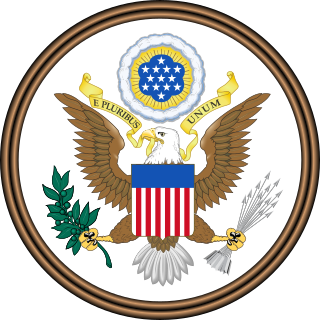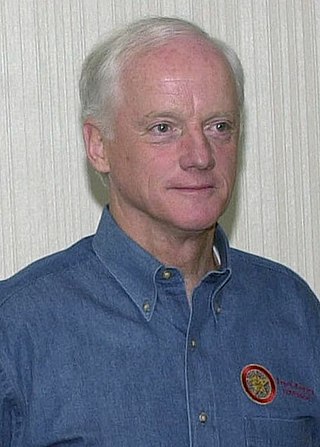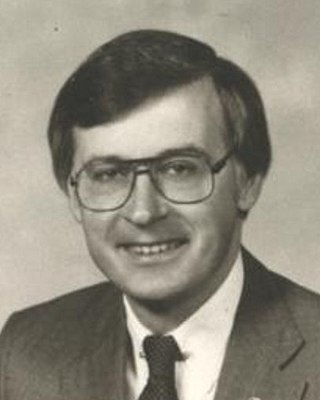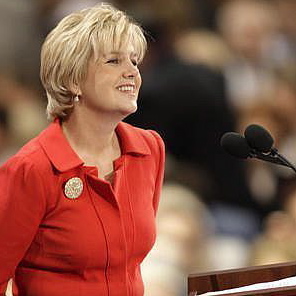Education reform is the name given to the goal of changing public education. The meaning and education methods have changed through debates over what content or experiences result in an educated individual or an educated society. Historically, the motivations for reform have not reflected the current needs of society. A consistent theme of reform includes the idea that large systematic changes to educational standards will produce social returns in citizens' health, wealth, and well-being.

George Herbert Walker Bush was the 41st president of the United States, serving from 1989 to 1993. A member of the Republican Party, he also served as the 43rd vice president from 1981 to 1989 under Ronald Reagan and previously in various other federal positions.

Outcome-based education or outcomes-based education (OBE) is an educational theory that bases each part of an educational system around goals (outcomes). By the end of the educational experience, each student should have achieved the goal. There is no single specified style of teaching or assessment in OBE; instead, classes, opportunities, and assessments should all help students achieve the specified outcomes. The role of the faculty adapts into instructor, trainer, facilitator, and/or mentor based on the outcomes targeted.

America's Promise Alliance is an American alliance of nonprofit, community organizations, businesses, and government organizations dedicated to improving the lives of young people.

Bill Clinton's tenure as the 42nd president of the United States began with his first inauguration on January 20, 1993, and ended on January 20, 2001. Clinton, a Democrat from Arkansas, took office following his victory over Republican incumbent president George H. W. Bush and independent businessman Ross Perot in the 1992 presidential election. Four years later, in the 1996 presidential election, he defeated Republican nominee Bob Dole and Perot again, to win re-election. Clinton served two terms and was succeeded by Republican George W. Bush, who won the 2000 presidential election.

Robert Ellsworth Wise Jr. is an American politician who served as the 33rd governor of West Virginia from 2001 to 2005. A member of the Democratic Party, Wise also served in the United States House of Representatives from 1983 until 2001. In 2005 Wise became the president of the Alliance for Excellent Education, a nonprofit organization that focuses on reforming the nation's high schools. In 2015, North Carolina State University honored Wise with the William and Ida Friday Institute for Educational Innovation's Friday Medal which recognizes significant, distinguished and enduring contributions to education through advocating innovation, advancing education and imparting inspiration.

The No Child Left Behind Act of 2001 (NCLB) was a 2002 U.S. Act of Congress promoted by the presidency of George W. Bush. It reauthorized the Elementary and Secondary Education Act and included Title I provisions applying to disadvantaged students. It mandated standards-based education reform based on the premise that setting high standards and establishing measurable goals could improve individual outcomes in education. To receive federal school funding, states had to create and give assessments to all students at select grade levels.

Francis Anthony Keating II is an American attorney and politician who served as the 25th governor of Oklahoma from 1995 to 2003.

Gerald Lee Baliles was an American lawyer and Democratic politician from the Commonwealth of Virginia whose career spanned great social and technological changes in his native state. The 65th Governor of Virginia, the native of Patrick County previously served as the Commonwealth's attorney general (1982–85), and represented Richmond and Henrico County in the Virginia House of Delegates (1972-1982). After another stint in private legal practice, with Hunton & Williams (1991-2005), Baliles directed the nonpartisan Miller Center of Public Affairs associated with his alma mater, the University of Virginia (2006-2014).
The economic policy of the Bill Clinton administration, referred to by some as Clintonomics, encapsulates the economic policies of president of the United States Bill Clinton that were implemented during his presidency, which lasted from January 1993 to January 2001.
The National Educational Goals, also known as the Goals 2000Act were set by the U.S. Congress in the 1990s to set goals for standards-based education reform. The intent was for certain criteria to be met by the millennium (2000). Many of these goals were based on the principles of outcomes-based education, and not all of the goals were attained by the year 2000 as intended. Many see this as the predecessor to the No Child Left Behind program, which mandated measurable improvement in student achievement across all groups. Goals 2000 established a framework in which to identify world-class academic standards, to measure student progress, and to provide the support that students may need to help meet the standards.
Education reform in the United States since the 1980s has been largely driven by the setting of academic standards for what students should know and be able to do. These standards can then be used to guide all other system components. The SBE reform movement calls for clear, measurable standards for all school students. Rather than norm-referenced rankings, a standards-based system measures each student against the concrete standard. Curriculum, assessments, and professional development are aligned to the standards.

George W. Bush served as the 46th governor of Texas from 1995 until 2000, when he resigned as governor amid his transition into the U.S. presidency after having been elected president in the 2000 United States presidential election. As governor, Bush successfully sponsored legislation for tort reform, increased education funding, set higher standards for schools, and reformed the criminal justice system. Bush also pioneered faith-based welfare programs and helped make Texas the leading producer of wind powered electricity in the U.S.

George H. W. Bush's tenure as the 41st president of the United States began with his inauguration on January 20, 1989, and ended on January 20, 1993. Bush, a Republican from Texas and the incumbent vice president for two terms under President Ronald Reagan, took office following his landslide victory over Democratic nominee Michael Dukakis in the 1988 presidential election. His presidency ended following his defeat in the 1992 presidential election to Democrat Bill Clinton, after one term in office. Bush was the father of the 43rd president, George W. Bush.

Lisa Graham Keegan is an American education reform advocate and the author of the parenting book Simple Choices.
Education in Virginia addresses the needs of students from pre-kindergarten through adult education. Virginia's educational system consistently ranks in the top ten states on the U.S. Department of Education's National Assessment of Educational Progress, with Virginia students outperforming the average in almost all subject areas and grade levels tested. The 2010 Quality Counts report ranked Virginia's K–12 education fourth best in the country. All school divisions must adhere to educational standards set forth by the Virginia Department of Education, which maintains an assessment and accreditation regime known as the Standards of Learning to ensure accountability. In 2008, 81% of high school students graduated on-time after four years. The 1984 Virginia Assembly stated that, "Education is the cornerstone upon which Virginia's future rests."
Maris A. Vinovskis is an American academic and historian at the University of Michigan and a leading authority on U.S. social and family history. He is the A. M. and H. P. Bentley Professor of History and a Professor of Public Policy, Gerald R. Ford School of Public Policy. Vinovskis acts as a senior research scientist in the Institute of Social Research. He is a former chairman of the department of history.

The history of the University of Virginia opens with its conception by Thomas Jefferson at the beginning of the early 19th century. The university was chartered in 1819, and classes commenced in 1825.
The federal government of the United States has limited authority to act on education, and education policy serves to support the education systems of state and local governments through funding and regulation of elementary, secondary, and post-secondary education. The Department of Education serves as the primary government organization responsible for enacting federal education policy in the United States.

Bill Clinton served two tenures as governor of Arkansas. Elected in 1978, Clinton first served as governor for a single term from 1979 until 1981, losing his bid for reelection in 1980. After a two-year interregnum, Clinton returned to the governorship after winning the 1982 election. Clinton would be elected to five further terms, serving until mid-December, 1992, when he resigned amid his transition into the U.S. presidency after having been elected president in the 1992 presidential election. Clinton was the second-longest serving governor in the state's history, after Orval Faubus.












